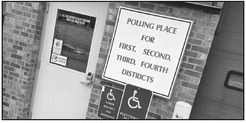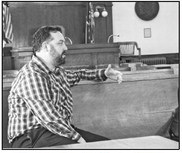Five simple suggestions to use the state surplus
Thanks to a booming state economy, prudent budgeting and spending cuts made under the former and current administrations, the state of Wisconsin is in the enviable situation of having a large budget surplus.
The Wisconsin Department of Administration announced last week that at the end of the 2022 fiscal year, the state had a record surplus of $4.3 billion. In addition, there was a balance of $1.73 billion in the state’s Budget Stabilization Fund - the “rainy day fund” to help during economic downturns.
News of this obscenely large surplus is nothing new. With tax revenues up in the post-pandemic economic recovery, and spending restrained in the current biennial budget, experts were projecting a sizable surplus. That said, the state’s general fund balance went up about 70% compared to the prior year and the rainyday fund balance is five times larger than it was four years ago.
So far, the state legislature has been unwilling to use this money for any public good for fear of giving political fodder during a hotly contested election season. With the election season over in a few weeks, it is time for those elected to govern the state to get back to the actual task of governing.
With the state sitting on more than $5 billion in taxpayer money, here are five suggestions on how the state legislature could use this windfall to help taxpayers now and in years to come.
1) Invest in long-term infrastructure needs including bridges, dams and highways. — There is an old adage when it comes to budgets that one time money should be spent on one-time projects. With the practical lifetime of dams and bridges ranging from 50 to 100 years, the state should look at putting additional resources into helping local governments with these high-ticket price items. This could be easily done by increasing the state contribution to existing programs and would have the direct benefit to taxpayers around the state who would otherwise have to pay more through their local property taxes.
2) Create an endowment to work toward the elimination of tuition in twoyear programs in the UW System and in the state’s technical colleges to remove barriers to getting people into skilled jobs.—As the workforce ages, Wisconsin will continue to face a shortage in skilled workers which will only get worse. Making an investment into the skilled training programs aligned with in-demand jobs in technical and specialized settings will help not only high school graduates and their families but be a major boost for Wisconsin businesses by increasing the pool of skilled workers. This would also be an incentive for people in border areas to come to Wisconsin for education. Since many of them would stay here for jobs, it could help reverse the state’s population drain.
3) Give money to local school districts to address long-term infrastructure needs. — The ongoing challenge in all public schools is to weigh regular operational costs against needed, but costly, facility maintenance and building renovation expenses. Using a portion of the surplus to address the need for new roofs and other long-term maintenance items would be a direct benefit to local taxpayers by avoiding the need for new referendums and allowing school boards to focus on meeting the educational needs of their communities.
4) Fund the court systems to clear backlogs and increase access to public defenders. — The wheels of justice move very slowly in Wisconsin. While there are many reasons for this, one of the primary ones is due to a lack of resources in the court systems. With county governments cash-strapped due to the stateimposed levy limit mandates, there is little that can be done at the local level. The state must make an investment in the court system, particularly to ensure that lower-income people have adequate legal counsel and the opportunity for true equality before the law. Investing in the court system would be an ongoing expense, but using some of the surplus funds to clear up the COVID-related backlogs in the system would be a major step forward.
5) Pay ahead on state debt to save money in future budgets — In fiscal year 2021, Wisconsin state debt stood at about $22.33 billion. Much of this is long-term bonds tied to infrastructure projects. Wisconsin is moving in the right direction when it comes to reducing the dependence on public debt, the current debt level is less than half of the $45 billion the state had in outstanding debt in 2012. Paying off long term debt has the advantage of reducing interest paid over time while also freeing up funds in future budgets for other purposes or to reduce taxes.
Wisconsin has a unique opportunity to use the surplus to make a substantial investment for the long-term good of Wisconsin residents and businesses. While it would be foolish to expect any activity out of the current legislature prior to the election, eventually they will have to get back to the task of actually governing. These five simple suggestions provide a starting point for putting the state surplus to work for the good for the citizens of Wisconsin.
Members of The Star News editorial board include Publisher Carol O’Leary, General Manager Kris O’Leary and News Editor Brian Wilson.




